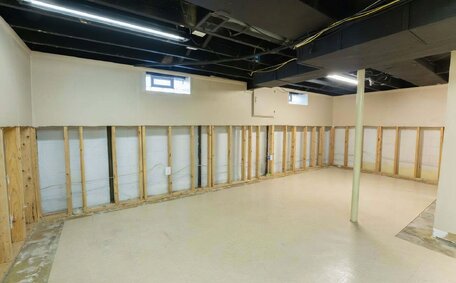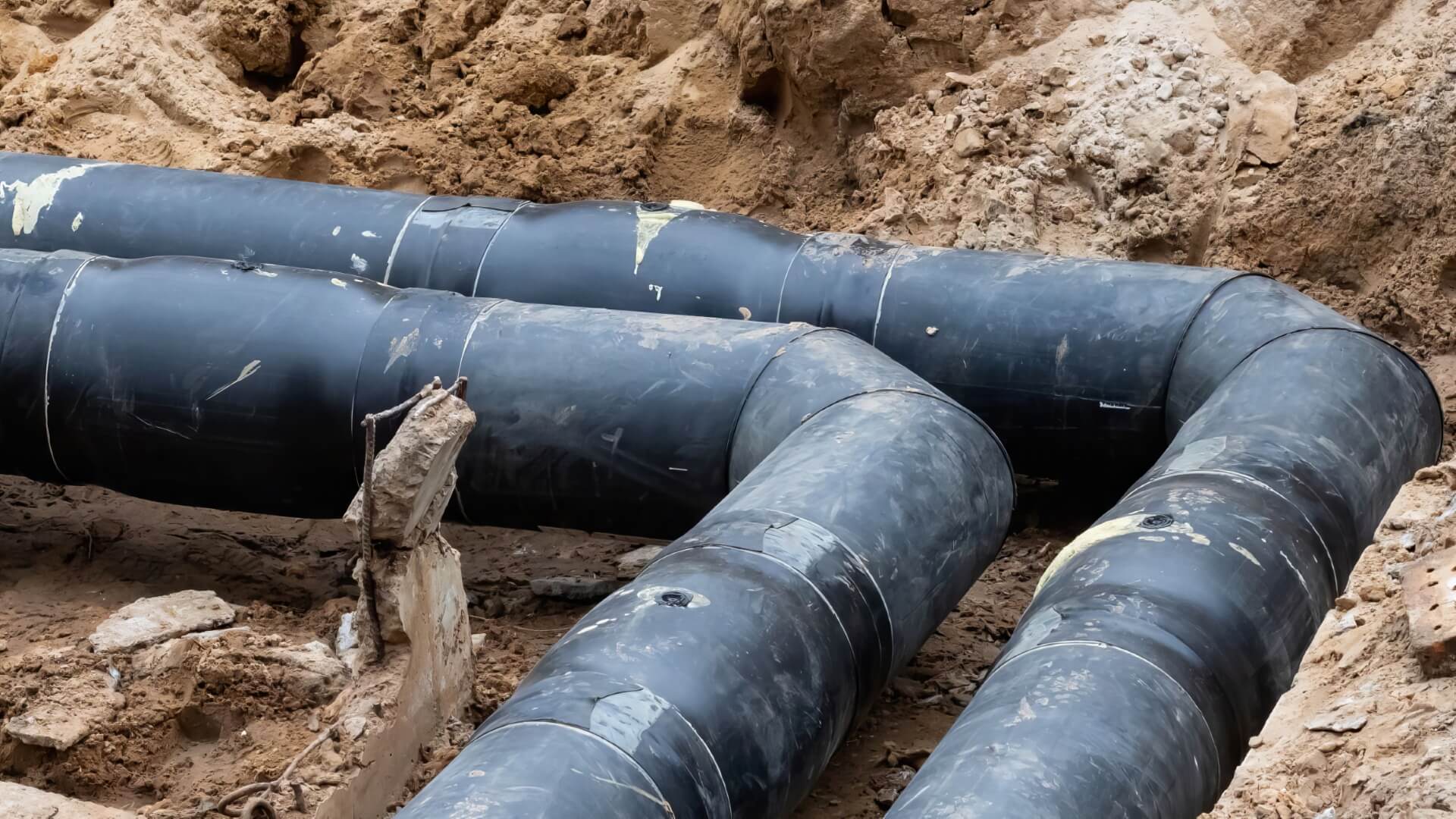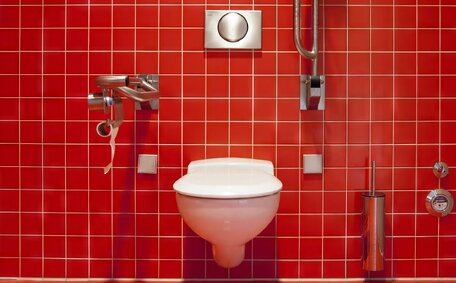Why your hot water runs out quickly
It’s frustrating when your hot water supply runs out unexpectedly, resulting in a chilly shower experience. There are several potential culprits that can cause hot water to deplete rapidly:
- Hot water heater insufficient for your household’s demands
- Faulty heating elements or sediment accumulation
- Dip tube damage causing hot and cold water to mix
- High water usage from multiple sources
- Low inlet water pressure affecting the flow rate
- Hot water leaks or faulty valves
- Inadequately adjusted thermostat settings
We’ll dive into these common issues to pinpoint why your shower runs out of hot water too rapidly. Identifying the specific problem is key to having a plumber recommend effective solutions for restoring a consistent hot water supply.
Assessing the size and capacity of your hot water system
The size and capacity of your hot water heater plays a crucial role in determining how quickly hot water gets depleted. Consider the correct size of the water heater and its flow rate in gallons per minute to meet your hot water requirements:
- Compare your tank’s size or flow rate capacity to your household’s typical hot water usage to ensure it’s adequate. An average shower consumes about 80 litres of hot water, whereas dishwashers use between 25-55 litres.
- Understand how many bathrooms/showers, sinks, etc your system supports. Each additional water outlet makes demands.
- Account for peak times, such as mornings and evenings, when hot water demand surges due to simultaneous usage.
- Be mindful of the recovery rate for tankless systems, as the maximum flow rate can restrict hot water availability during peak demand.
- Check equipment age and warranty - older systems tend to have more wear per minute reducing heating capacity.
- Inspect the cold water inlet pipes and valves feeding the unit - scale buildup reduces flow rates, affecting the temperature of water coming into the system.
If your hot water usage routinely runs out hot, it may be a sign your system’s capacity is being outpaced, rapidly depleting the reserve tank or exceeding the continuous flow rate. Upgrading to a larger unit or installing recirculation pumps can provide extra hot water flow.
Impact of sediment buildup on hot water supply
Over time, sediment buildup inside the water tank can expedite the loss of hot water supply and decrease flow.
As hard water, rich in minerals like calcium and magnesium, passes through the water heater, it deposits microscopic sediments at the base of the tank. This limescale buildup accumulates over months and years if not flushed, eventually covering elements in the heater tank and reducing contact with water.
Sediment accumulation in the water heater tank leads to various problems:
- Thick sediment layers insulate heating elements, diminishing their efficiency and depleting hot water more swiftly while increasing energy consumption.
- Diminished water heater capacity as sediment occupies a considerable portion of the tank’s base.
- Can completely cover elements, preventing them from heating water at all.
- Restricting water flow to your hot water shower through inlet pipes and obstructed heating elements.
Regularly flushing your system helps maintain an optimal hot water supply by mitigating sediment buildup. Preventing your hot water running out quickly will sometimes necessitate a plumber to open the drain valve, inspect elements, and check dip tubes, clearing any stubborn deposits. Catching buildup early keeps heating systems working at optimal efficiency so hot water lasts longer.
How thermostat issues affect hot water consistency
The thermostat plays a critical role in regulating your hot water system’s temperature. This control unit and temperature sensor tells the heating elements when to switch on and off, to adjust the temperature to the level you’ve got set.
Common thermostat issues that impact hot water consistency include:
- Incorrect temperature setting - If set too low, not enough hot water is produced, which can be as frustrating as a faulty pilot light in a gas heater.
- Failing thermostat - An older, worn-out control unit suffers reduced accuracy in sensing water temperature.
- Thermostat out of calibration - Results in unpredictable water heating patterns.
- Faulty temperature probe - Provides inaccurate temp data to the thermostat controller.
To help avoid these thermostat-related problems, you’ve got several options:
- Set the unit between 50°C to 60°C to maximise hot water capacity.
- Have a plumber annually test & calibrate the thermostat for peak performance.
- Replace thermostats older than 5 years to maintain precision.
Properly setting your hot water system’s thermostat guarantees consistent heating and steady hot water supply.
Heating element efficiency and hot water supply
Electric and gas hot water systems rely on internal heating elements to raise the temperature of water entering the tank. These coiled metal tubes heat up when activated, transmitting thermal energy directly into the surrounding water.
Problems with heating elements can contribute to diminishing your hot water capacity and flow rate:
- Excess sediment coating the elements acts as insulation, reducing heating efficiency
- Mineral deposits fully covering elements and hindering lower heating efficiency, preventing water contact
- Burnt-out, broken or warped elements unable to properly heat
- Issues with the upper thermostat may result in only the lower heating element functioning in electric units
Inspect heating elements annually to maintain condition and efficiency, promptly remove sediment buildup, and replace if defective. This optimises the heat transfer capability, allowing your hot water system to reheat water faster and maximise the available hot supply.
Pipe connections and system damage
Compromised pipe connections can result in a swift depletion of hot water. Cracks, leaks, or corrosion in pipes allow where heated water can escape the closed loop system.
Inspect the pipes connected to the heater, looking for:
- Visible cracks or holes allowing water leaks
- Corroded fittings and pipe joints prone to developing pinhole leaks
- Water stains or mineral deposits indicating small leaks
- Improperly threaded pipe connections causing water seepage
Pipe insulation preserves water temperature, reducing heat loss as water flows through your home. Consider installing insulation wraps around pipes to improve efficiency, keeping the water too warm on its journey.
Replacing old or damaged pipes and fittings curbs leaks, keeping all hot water contained within the system. This, as part of a water heater repair, restores pressure, flow rate and hot water capacity.
Signs your hot water system needs replacing
Several indicators suggest it’s time to replace your hot water system:
- Inconsistent water temperatures - Fluctuating when water swiftly turns lukewarm, it’s likely due to a failing thermostat or heating elements.
- Leaks - Any visible leaks from the tank, valves or pipe connections signify wear and tear necessitating replacement.
- Rust accumulation - Excessive corrosion and rust around the tank exterior hints at internal deterioration.
- Old age - Most tank water heaters last 8-12 years. Significantly exceeding this lifespan means you’re due for an upgrade.
- Loud noises - Knocking, rumbling or banging noises suggest serious internal faults needing attention.
- High energy bills - If heating water consumes excessive electricity relative to your usage, your system runs inefficiently.
- Slow recovery - Long wait times for reheating suggest poor heating element performance.
Get in touch with a professional Sydney plumber to check the anode rod if you’re questioning 'Why does my hot water heater run low on hot water?'. They can diagnose issues and advise whether installing a new hot water system makes better economic sense than persisting with repairs.
Common issues that can lead to cold shower water
Several common issues can result in frustratingly cold showers:
- Broken dip tube - This inlet tube directs incoming cold water to the cold water bottom of the tank, while the hot water outlet draws from the warmer top area. If cracked or detached, cold and hot water mix resulting in cooler temperatures.
- Simultaneous water uses - Multiple taps running simultaneously can make your heater run out hot water before it can recover, quickly depleting your supply.
- Sediment buildup on the water heater’s heating elements - Heavy limescale deposits insulate the elements, causing your shower running out hot water more quickly. This can result in an out hot water shower scenario, requiring prolonged times to reheat after heavy usage.
- Clogged water inlet filter screen - Debris accumulating in the filter screen restricting incoming cold water flow to the base of the tank, necessitating a mix of more hot and cold water for an ideal shower temperature.
A professional plumber can diagnose why your shower running out of consistent temperatures by inspecting related components like heating elements, inlet tubes, and water filters. They can then clear obstructions or install replacements to restore consistently hot water supply.
Steps to prevent and deal with hot water leaks
Undetected leaks from gas water heaters can lead to energy waste, property damage, and increased bills. Take proactive steps to prevent leaks:
- Conduct visual inspections of pipes, valves, and connectors for signs of wear like corrosion and cracks.
- Checking water heater exterior for rust and moisture. Signs of internal leaks.
- Monitoring usage patterns and bills. Spikes may indicate undiscovered leaks.
- Installing leak prevention devices like TPR valves (temperature and pressure relief).
- Ensuring water heater pressure remains around 550 kPa.
If you spot leaking water, locate the source and turn off water supply valves. Place buckets or towels to catch water, temporarily staving off your concerns about leaks. Phone your plumber without delay to inspect for damage and carry out heater repair before restoring water supply.
How your water usage patterns impact hot water availability
Hot water availability is directly influenced by your household’s usage patterns. During peak times like mornings when multiple people shower, dishes are washed, and laundry is done, demands for water running out spikes. Using multiple appliances at once can exceed the recovery rates of electric and gas systems, leading to hot water shortages.
Strategies to avoid running out of hot water for your electric water heater:
- Schedule showers, laundry, dishwashing and other tasks using hot water throughout the day rather than all at once.
- Consider upgrading to a tankless hot water system that can handle peak demand surge.
- Repair leaks and install low-flow fixtures to reduce water wastage and usage.
- Insulate pipes to limit cooling losses as water travels to outlets.
- Adjust your thermostat down during cooler months to match decreased hot water requirements.
Staggering usage ensures your water heater can keep pace with heating the water your home needs. Recirculation pumps can enhance hot water availability. Lastly, follow preventative maintenance like flushing to sustain efficiency.
Considering alternative hot water heating options
Beyond traditional gas and electric storage tank water heaters, Sydney households should consider energy-efficient and eco-friendly alternative options:
Tankless/Instantaneous Water Heaters
- Instantly heats water as needed, removing the necessity for a storage tank
- Provides continuous hot water given an adequate gas/electricity supply
- Smaller footprint saves space
- Generally more expensive upfront cost
- Flow rate limits during simultaneous use
Solar Water Heaters
- Utilizes solar energy to heat water, offering an eco-friendly solution
- Reduces energy bills while helping the environment
- Storage tanks require space
- Supplemental electric/gas heating needed for cloudy days
- Higher upfront costs but tax incentives available
Heat Pump Water Heaters
- Extract ambient heat to heat water with a heat exchanger
- Offers high energy efficiency with reduced running costs
- Performs effectively in warm climates such as Sydney’s
- Initially more costly than conventional models
Consult a professional plumber to identify the best hot water system for your home.






